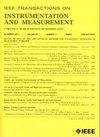利用信息融合技术远程光学传感心音以进行生物识别
IF 5.6
2区 工程技术
Q1 ENGINEERING, ELECTRICAL & ELECTRONIC
IEEE Transactions on Instrumentation and Measurement
Pub Date : 2024-09-19
DOI:10.1109/TIM.2024.3457967
引用次数: 0
摘要
机器学习(ML)广泛应用于医疗保健领域,用于从原始数据中对生命和健康信号进行分类。这种方法既改进了现有的测量技术,又为开发新方法提供了机会。在这项工作中,我们提出了两种不同的信息融合方法,用于对新一代光学听诊器记录的心音信号进行分类。光学听诊器由一个绿色激光二极管和一个高速工业相机组成;激光对准人的颈部和胸部,相机接收反射的激光斑点。所提出的融合方案将 VGG-19 神经网络和 Bi-LSTM 神经网络在特征和决策层面的输出结合起来,对来自人体不同测量点的数据进行融合。在决策层融合中,利用加权和函数来合并两个网络的信息;而在特征层融合中,利用全连接层块来级联 VGG-19 和 Bi-LSTM 最后一层的输出向量。由于卷积神经网络和递归神经网络在提取信息方面的差异,这两种方法与单一网络相比都有 10% 或更多的改进。在对颈部和胸部数据进行训练和测试时,二尖瓣和三尖瓣听诊位置的平均分类性能优于主动脉瓣和肺动脉瓣位置的平均分类性能。本文章由计算机程序翻译,如有差异,请以英文原文为准。
Remote Optical Sensing of Heart Sounds for Biometric Identification Using Information Fusion
Machine learning (ML) has extensive applications in healthcare for the classification of vital and health signals from raw data. This method both improves the existing measurement techniques and provides opportunities for developing new approaches. In this work, we present two different information fusion methods for classifying the heart sound signals recorded by a new-generation optical stethoscope. The optical stethoscope consists of a green laser diode and a high-speed industrial camera; the laser is pointed to the human neck and chest area and the camera receives the reflected laser speckles. The proposed fusion schemes then combine the output of VGG-19 and Bi-LSTM neural networks at the feature and decision levels and fuse the data from different measurement points on the body. For the decision-level fusion, a weighted sum function is utilized to merge the information of two networks, whereas, for the feature level, a fully connected layer block is implemented to cascade the output vectors from the last layer of VGG-19 and Bi-LSTM. Both methods show the subsequent improvement of 10% or more compared to the single network thanks to the difference in extracted information between convolution and recurrent neural networks. When training and testing the proposed fusion methods on the combination of neck and chest data, the mitral and tricuspid valve auscultation positions demonstrate better average classification performance than the aortic and pulmonary valve positions, with validation via ten iterations of training and testing of the ML models.
求助全文
通过发布文献求助,成功后即可免费获取论文全文。
去求助
来源期刊

IEEE Transactions on Instrumentation and Measurement
工程技术-工程:电子与电气
CiteScore
9.00
自引率
23.20%
发文量
1294
审稿时长
3.9 months
期刊介绍:
Papers are sought that address innovative solutions to the development and use of electrical and electronic instruments and equipment to measure, monitor and/or record physical phenomena for the purpose of advancing measurement science, methods, functionality and applications. The scope of these papers may encompass: (1) theory, methodology, and practice of measurement; (2) design, development and evaluation of instrumentation and measurement systems and components used in generating, acquiring, conditioning and processing signals; (3) analysis, representation, display, and preservation of the information obtained from a set of measurements; and (4) scientific and technical support to establishment and maintenance of technical standards in the field of Instrumentation and Measurement.
 求助内容:
求助内容: 应助结果提醒方式:
应助结果提醒方式:


